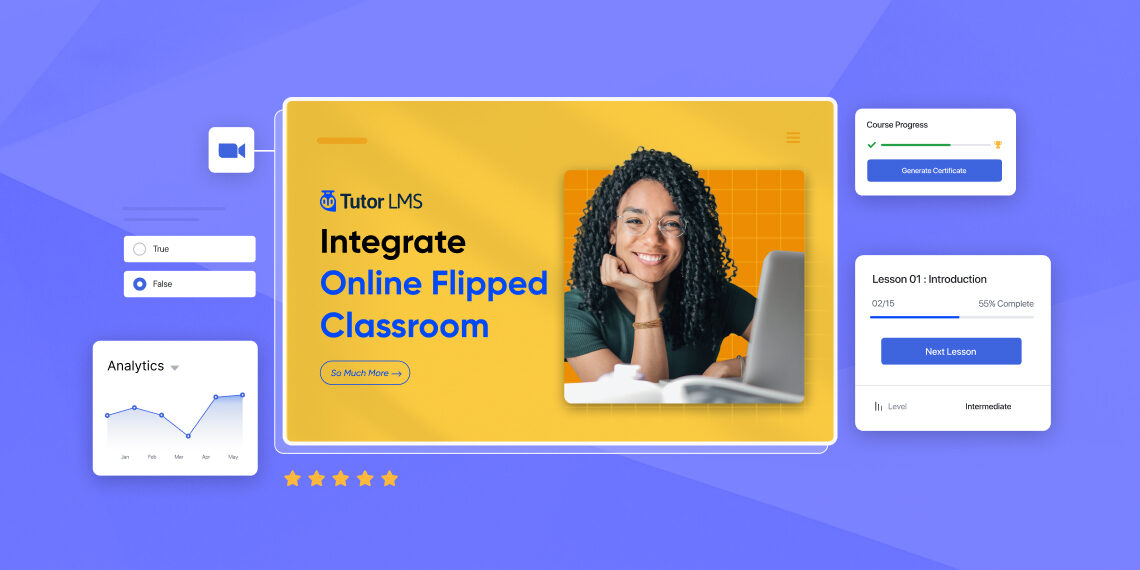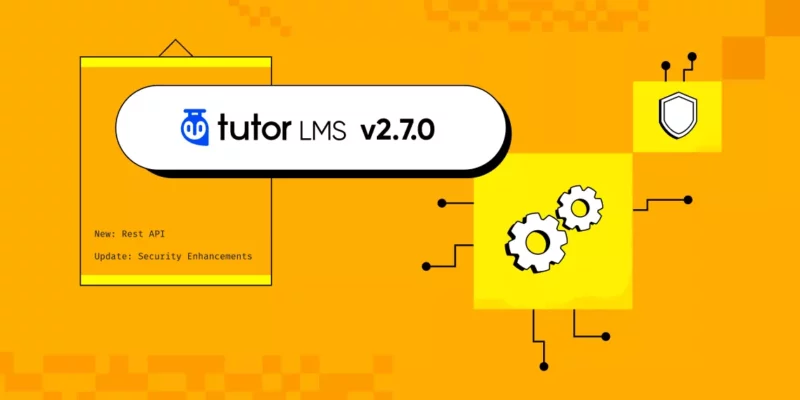The development of smart technology has had a drastic effect on the education system. These changes have introduced several instructional methods or web-based course management systems.
One of the most exciting advancements in the modern classroom is the flipped learning or flipped classroom method. Although termed modern, flipped learning does not eliminate face-to-face learning. Instead, it takes what has always worked and reinvents ways to deliver it better than ever using technology.
Learning Management Systems (LMS) are integral to any good flipped learning pedagogy. This article looks at how Tutor LMS facilitates the learning experience in a flipped learning environment in WordPress. And finally, how you can implement flipped learning in your online classroom.
Traditional Classroom vs Flipped Classroom What is the Difference?
Traditional Classroom: In traditional learning, learners get new knowledge in the classroom primarily through teachers’ lectures. Then they are required to extend the newly gained knowledge at home as homework.
Flipped Classroom: In flipped learning, learners acquire the course materials before class or engage in some form of pre-class activities. They watch the course videos and other materials provided by the teachers before class to explore the topic and gain some foundational knowledge before attending the class.
And then, during the class, students engage in in-class activities like discussions, questions & answers, feedback, etc., which can be conducted through live classes followed by post-class activities like assignments.
Flipped learning helps teachers focus on student engagement and active learning during class time.

The 4 Pillars of Flipped Learning
Understanding the difference between the two learning methods is important. But we can elaborate and explain the principles on which flipped learning is based on. The acronym FLIP outlines and define the four core pillars of true flipped learning:
- F – Flexible Environment: The “F” in FLIP stands for flexible environment. Successful flipped learning requires flexible learning spaces for learners to progress. Educators also need to be flexible in how learning is delivered and assessed.
- L – Learning Culture: Next is the “L” in flip learning which represents a learning culture. Flipped learning offers a more learner-centric classroom instead of a teacher-centric method.
- I – Intentional Content: Intentional content refers to predetermined content. What educators need to teach and what materials students should explore independently. Well-researched content is vital for a successful flipped classroom. Educators in flipped learning continuously plan ways to help students develop conceptual understanding.
- P – Professional Educator: The role of an Educator is even more critical and often more demanding in flipped learning. Educators must observe their students and give them relevant feedback while assessing their work. Even though Professional Educators take on a seemingly less important role, they remain an essential component that enables flipped learning to occur.
How to Integrate an Online Flipped Classroom
Implementing an entirely online flipped classroom model can be challenging. This may be your first time getting used to making online content, using an LMS, or creating virtual lessons. But it’s worth the challenges as the benefits will outway the cost.
So to alleviate some stress, we have listed the six steps for you to follow for an easier transition to flipped learning.
Step 1: Planning
The first step is to evaluate all aspects involved in the transition process. Instructors must formulate a practical course layout and sequence viable with the flipped learning model. For instance, a course layout designed for flipped learning should look something like this:
- Introduction to the topic
- Lesson plan
- Lesson expectations & directions
- Learning objectives & outcomes
- New instructional material & resources
- Incentive activity that prepares students for an in-class activity
Different courses can have different layouts, so remember to structure lessons accordingly. Besides course layout, instructors must prioritize and sort out the learning outcomes, objectives, instructional resources, and material.
Step 2: Finding The Right LMS
To establish a smooth transition from traditional to flipped learning, we will need the help of an LMS that has all the features we need to implement flipped learning.
Tutor LMS is a good example of an excellent LMS suited for online flipped learning. It includes the best features necessary for creating a perfect flipped learning environment. We formed a list of must-have features for you to adhere by :
- Gamification
- Advanced Quiz Builder
- Advanced Analytics & Reports
- Integrated course content library
- Assessments
- Google Classroom/Zoom Integration
- Event Calendar
- Mobile Learning
- In-depth Course builder
- Video Conferencing capabilities
- Group Discussion Boards
- Supports all media type
- Quiz, Assignments, Auto Marking
- Progress Tracking
Learn how to get started with Tutor LMS here.
Step 3: Create A Variety of Pre-Class Content
As an educator, one vital thing to remember is to keep things interesting for your learners to ensure they engage in the pre-class activities. Learners always respond more positively when the lessons are fun and engaging. This tells instructors that engagement and variety must be central to their learning and development plans.
Technological limitations have long been one of the biggest challenges to flipped classroom implementation. But with the help of modern technology, teachers can easily create and distribute lectures, reading assignments, and more with multimedia content.
An LMS like Tutor LMS can help you accomplish your goal of more engaging, impactful teaching with the integrated advanced course builder. Other tools like Google Slides and Canva are available for educators to create engaging course visuals. You will also need a reliable audio/video (AV) recording setup to record video lectures if needed. Your AV setup should include computers, cameras, microphones, and tablets.
Step 4: Design Collaborative In-Class Exercises
One of the challenges of a flipped learning model is that you must focus on learner-to-learner interaction during live classes and allow collaboration.
Below we have listed some flipped learning types of group exercises that could allow for great collaboration between your learners and create a true flipped learning community.
- Discussions
- Brainstorming Ask learners to come up with several options to solve a challenge.
- Workshop
- Case Studies
- Problem Solving
Collaborative exercises do not have to end with live classes. You need to offer your learners the opportunity to connect to their fellow learners and instructors online. Luckily, Tutor LMS also offers integration to help students form groups for class discussions.
There are other built-in features devoted to facilitating collaboration; for example, students can use a message board to post Q/A for others to view and comment on.
Step 5: Evaluate and Assess The Class Model (Post-Class)
After implementing the instructional model, instructors must assess their method’s effectiveness. This can be accomplished on the following criteria:
- If the learners have gained a firm understanding of the topics covered, check if they have learned any new skills.
- Measure the learner’s ability to connect the learned content with real-life context.
- Identify if the information delivery was effective in regards to communicating the message.
You can easily assess the students with Tutor LMS’s advanced quiz builder and assignments features.
Wrapping Up
As teachers look for new ways to create engaging lessons, flipped learning is quickly emerging as an exciting new approach that promises multiple benefits for both teachers and students. It helps to narrow down the problems each student is facing individually, improves the communication system through group exercises, and has plenty of other benefits.
And the cherry on top — Tutor LMS has all the tools you’ll need to make flipped learning a success for your eLearning site. So, what’s the wait? Go ahead and give this learning method a try and let us know the outcome in the comments below.



